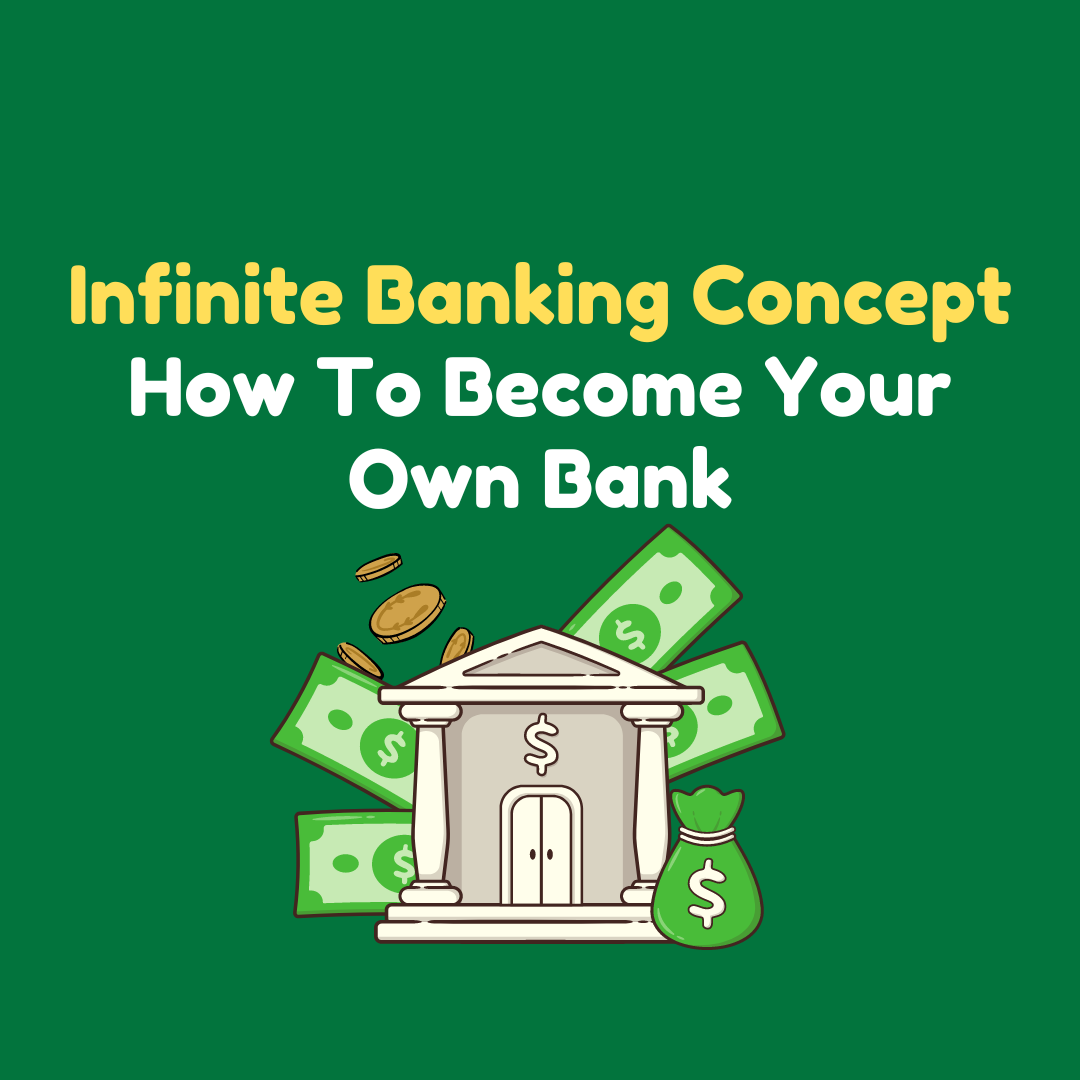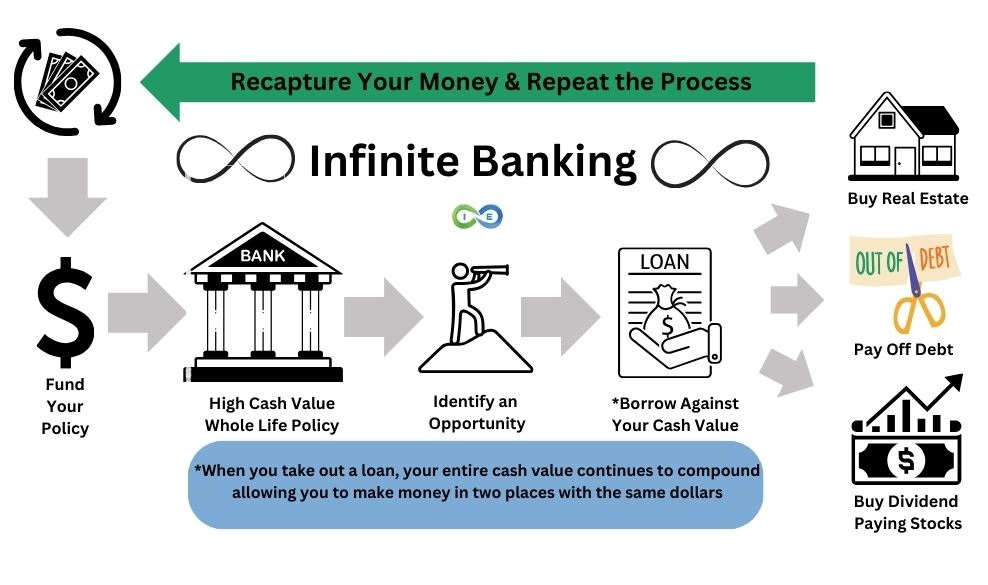All Categories
Featured
Table of Contents
The downsides of unlimited financial are typically forgotten or otherwise stated in any way (much of the information readily available about this idea is from insurance coverage agents, which might be a little biased). Just the cash value is growing at the dividend price. You additionally need to pay for the cost of insurance policy, fees, and expenses.

Every irreversible life insurance coverage plan is different, however it's clear a person's general return on every buck spent on an insurance product might not be anywhere close to the returns rate for the plan.
Ibc Concept
To offer a very fundamental and hypothetical example, let's think somebody is able to earn 3%, on standard, for every buck they invest on an "boundless financial" insurance policy product (after all expenditures and costs). If we assume those bucks would be subject to 50% in taxes complete if not in the insurance product, the tax-adjusted price of return might be 4.5%.

We think higher than average returns overall life product and an extremely high tax rate on bucks not take into the plan (that makes the insurance product look far better). The truth for lots of people might be even worse. This pales in contrast to the long-term return of the S&P 500 of over 10%.
Limitless banking is a great product for agents that offer insurance coverage, however might not be optimal when compared to the less expensive choices (with no sales people earning fat compensations). Right here's a break down of some of the various other supposed benefits of infinite banking and why they may not be all they're split up to be.
Nelson Nash Institute
At the end of the day you are buying an insurance product. We love the security that insurance policy supplies, which can be obtained much less expensively from a low-cost term life insurance policy policy. Overdue financings from the plan may also lower your fatality benefit, diminishing one more degree of protection in the plan.
The concept only functions when you not just pay the substantial costs, yet use additional cash money to buy paid-up enhancements. The possibility price of all of those dollars is incredible exceptionally so when you can instead be buying a Roth IRA, HSA, or 401(k). Even when compared to a taxable financial investment account or perhaps an interest-bearing account, unlimited banking might not provide equivalent returns (compared to spending) and similar liquidity, access, and low/no fee framework (compared to a high-yield interest-bearing accounts).
With the rise of TikTok as an information-sharing system, financial advice and approaches have discovered an unique means of spreading. One such method that has been making the rounds is the boundless financial idea, or IBC for brief, gathering endorsements from celebrities like rap artist Waka Flocka Flame. Nonetheless, while the technique is presently popular, its origins map back to the 1980s when financial expert Nelson Nash introduced it to the world.

Within these plans, the money value expands based upon a price set by the insurance company. When a substantial cash value builds up, insurance holders can get a cash money worth lending. These finances vary from conventional ones, with life insurance working as collateral, meaning one might shed their coverage if borrowing exceedingly without ample cash money worth to sustain the insurance prices.
Becoming Your Own Banker Nash
And while the attraction of these policies appears, there are inherent limitations and risks, demanding thorough money worth surveillance. The method's authenticity isn't black and white. For high-net-worth individuals or entrepreneur, specifically those utilizing strategies like company-owned life insurance policy (COLI), the benefits of tax breaks and compound development might be appealing.
The allure of infinite banking doesn't negate its obstacles: Expense: The fundamental need, a permanent life insurance policy, is pricier than its term equivalents. Qualification: Not every person receives entire life insurance coverage because of extensive underwriting processes that can omit those with details health and wellness or way of life problems. Intricacy and threat: The complex nature of IBC, paired with its risks, might prevent numerous, especially when easier and much less high-risk alternatives are available.

Alloting around 10% of your regular monthly earnings to the plan is just not feasible for the majority of people. Part of what you read below is simply a reiteration of what has actually currently been claimed over.
So prior to you obtain right into a scenario you're not prepared for, know the adhering to first: Although the concept is generally sold thus, you're not in fact taking a financing from yourself - bioshock infinite bank cipher code book. If that were the instance, you wouldn't need to repay it. Instead, you're obtaining from the insurance coverage company and need to repay it with interest
What Is Infinite Banking
Some social media articles advise utilizing cash money value from entire life insurance coverage to pay down bank card financial obligation. The concept is that when you pay off the lending with rate of interest, the amount will be returned to your investments. That's not exactly how it functions. When you pay back the financing, a part of that interest goes to the insurance firm.
For the first numerous years, you'll be repaying the commission. This makes it extremely tough for your plan to accumulate value during this moment. Whole life insurance expenses 5 to 15 times more than term insurance policy. The majority of people just can't afford it. Unless you can afford to pay a couple of to several hundred bucks for the following years or even more, IBC will not work for you.
If you require life insurance coverage, here are some important ideas to think about: Think about term life insurance. Make certain to shop around for the finest price.

Boundless banking is not an item or service offered by a details establishment. Infinite banking is a technique in which you buy a life insurance coverage policy that accumulates interest-earning cash worth and get fundings versus it, "borrowing from on your own" as a resource of funding. Then eventually pay back the lending and begin the cycle throughout once again.
Pay plan premiums, a section of which builds cash money value. Money value gains worsening interest. Take a lending out versus the plan's money value, tax-free. Pay off lendings with rate of interest. Money worth gathers once more, and the cycle repeats. If you utilize this idea as meant, you're taking cash out of your life insurance plan to buy whatever you would certainly need for the rest of your life.
Latest Posts
Nelson Nash Bank On Yourself
The First Step To Becoming Your Own Banker
Cash Flow Banking Reviews